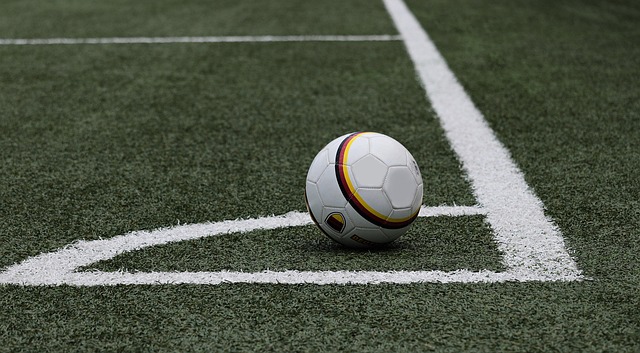Understanding Game-Time Pressure
Pressure isn’t just a feeling—it’s a full-body experience. Physically, your heart rate climbs, muscles tighten, breathing shortens. Psychologically, thoughts race, doubts creep in, and focus narrows—sometimes too much. It’s the body’s way of gearing up for performance, but left unmanaged, it can hijack your game.
In competition, pressure usually hits hardest in predictable spots: free throws with seconds left, penalty shootouts, final reps, clutch plays. It also flares when expectations are high—think title matches, scouts in the stands, or the moment you know everyone’s watching. Pressure doesn’t care if you’ve done this a hundred times. The stakes, real or imagined, crank the internal volume.
But here’s the truth: managing pressure isn’t something you’re born with. It’s a skill. The best learn to interpret the sensation not as fear, but as readiness. They train their bodies and minds to stay steady when it counts. That calm you see in elite athletes? It isn’t magic. It’s practiced. And it starts with understanding what pressure really is—and respecting it enough to train for it.
Mental Preparation Before the Whistle
Mental prep isn’t fluff—it’s a solid edge. Athletes who perform under pressure don’t just rely on muscle memory; they build mental habits that hold up when intensity spikes.
Start with visualization. This isn’t daydreaming. It’s about vividly running through plays, reactions, scenarios you’ll face—again and again—in your mind. Picture the court, the noise, the movement of your body as you execute. The goal is repetition with intention. You’re training your brain to be familiar with game-time stress before you even get there.
Next, locking in focus starts with the breath. Controlled breathing is like a reset button. Slow inhale, even slower exhale. It lowers the heart rate, clears the static. Same goes for quick mindfulness drills. Just 30 seconds of being fully present—feet grounded, hands relaxed, eyes steady—can anchor you in chaos.
Finally, shift the spotlight. Winning isn’t your target—execution is. Set process-focused goals: consistent footwork, crisp passes, the right decision in the moment. These are controllable. Outcome-focused goals? They add pressure you can’t manage. Focusing on process pulls your head out of the scoreboard and back into the game.
Confidence under pressure doesn’t show up by accident. It’s built one rep at a time—mental, physical, and everything in between.
In-the-Moment Adjustment Tactics
When the game speeds up, slowing yourself down becomes a skill. Grounding routines—those tiny, repeatable actions between plays, sets, or timeouts—anchor athletes in the moment. Maybe it’s adjusting your socks, tapping the ball twice, a deep breath. These aren’t habits by accident. They cue the body to reset and the brain to focus. High-performers use them to clear mental clutter before the next decision.
Then there’s the quiet voice inside your head. That’s where positive self-talk comes in. It’s not about toxic positivity or cheering yourself on with empty slogans. It’s direct, quiet, and honest: “You’ve done this before,” “Stay with it,” or even just, “Breathe.” The key is to be your own coach, not your worst critic.
And let’s talk decision fatigue. In high-speed games, poor choices pile up fast. The trick isn’t making faster decisions—it’s making cleaner ones. Build patterns and plans ahead of time so you don’t have to think too much under pressure. Streamline what you can. Routine breeds confidence, and confidence lets you stay sharp when everything around you is fraying.
Surviving several intense moments is one thing. Stacking them with clarity and control? That’s where the gap shows between good and elite.
Team Dynamics Under Pressure
When the game tightens and seconds matter, trust isn’t optional—it’s the default setting that makes or breaks performance. The best teams don’t rely on one hero to carry the weight. They share it. That only works if communication is tight, fast, and honest.
Clutch moments are tests of chemistry. In those flashes of chaos—fast breaks, overtime possessions, high-stakes final plays—there’s no time for overthinking. You need teammates who know what you mean before you finish the sentence. That kind of instinctive connection doesn’t show up overnight. It’s built every practice, every shared failure, every sideline correction.
Great teams spread responsibility when pressure hits. Leaders don’t hoard decisions, they delegate with trust. Role players step up because they know what’s expected, and because the system lets them own their slice without second-guessing. There’s power in that kind of structure: pressure gets absorbed, not passed down.
For a deeper dive into how high-functioning teams create that kind of cohesion, check out Mastering Team Dynamics: Key Strategies for Success.
Turning Nerves into Fuel
Game-time anxiety is the mind’s way of flashing a red light before something important. But here’s the switch: instead of treating those nerves as a problem, treat them as preparation. The racing heart, tight chest, and restless energy—they’re the body’s way of gearing up. You’re not falling apart. You’re getting ready. The key is to reframe: this isn’t fear, it’s activation.
Physiologically, stress shows up in very real ways—elevated cortisol, fast breathing, shaky hands. But these signs aren’t permanent. Grounding techniques like box breathing, muscle relaxation, and quick mental resets between plays can help athletes regain control in the heat of the moment. Control the breath and the body tends to follow.
And finally, learn from pressure—not just when it breaks you, but also when it builds you. Moments where you rose, where instinct kicked in and you delivered—those are fuel. So are the mistakes. Review the tape. Don’t just judge it—study it. Being under pressure is inevitable. Folding under it isn’t.
Training for Pressure Situations
High-pressure moments in sports aren’t just physical—they’re mental tests that demand focus, adaptability, and confidence. One of the most effective ways to prepare for them is to train in ways that closely simulate competitive intensity. Here’s how athletes can get game-ready when the pressure’s on.
Simulation Drills: Practice Like It’s Game Day
Replicating the energy and unpredictability of real competitions helps bridge the gap between practice and performance.
- Timed or scored drills: Add constraints like a countdown clock or score targets to increase intensity.
- Chaos drills: Include expected disruptions—unexpected plays, crowd noise, or simulated bad calls—to test adaptability.
- High-stakes scrimmages: Create scrimmage scenarios where outcomes come with consequences (win-or-run, tiered rewards) to build emotional durability.
These practices sharpen focus and reduce the shock of real-time pressure because athletes have already “been there.”
Film Review: Your Mental Playbook
Watching game footage isn’t just about fixing mistakes. It’s about building self-awareness and reinforcing confidence under pressure.
- Identify trends: Review how you’ve historically responded during tight moments.
- Highlight strengths: Remind yourself of situations where you performed well under stress.
- Track progress: Use film to measure growth over time and refine tactical decision-making.
Consistent film review enables athletes to instinctively respond better in the clutch—because they’ve already mentally rehearsed it.
Creating Pressure on Purpose
Pressure doesn’t have to be feared—it can be built into training by design. The more you expose yourself to stress in a controlled setting, the more composed you’ll feel in real competition.
- Add consequences to drills: Small stakes like doing extra reps or earning privileges push focus and execution.
- Peer-led pressure: Let teammates hold each other accountable during situational exercises.
- Micro-goals for intensity: Set short-term in-practice goals with limited timeframes to simulate urgency.
By normalizing pressure in training, athletes develop mental resilience and reduce the unpredictability of high-stakes moments.
Training under pressure isn’t just preparation—it’s transformation. When athletes learn to thrive in discomfort, they set themselves apart when the game is on the line.
Final Thoughts
Resilience isn’t some gene you’re born with. It’s built through reps—just like strength, just like skill. You show up, you grind, and you fail forward. The pressure? It never really goes away. But your relationship to it can change. Learn to recognize it, work with it, not against it. Treat it like a training partner instead of an enemy.
In the end, performance under pressure comes down to presence and persistence. You keep moving—even when your hands shake. You reset, breathe, adjust. Then you go again. That’s how resilience grows. Not in perfect conditions, but right in the middle of the storm. And the ones who succeed? They’re not always the most gifted. They’re the ones who didn’t quit when the game got tight.




